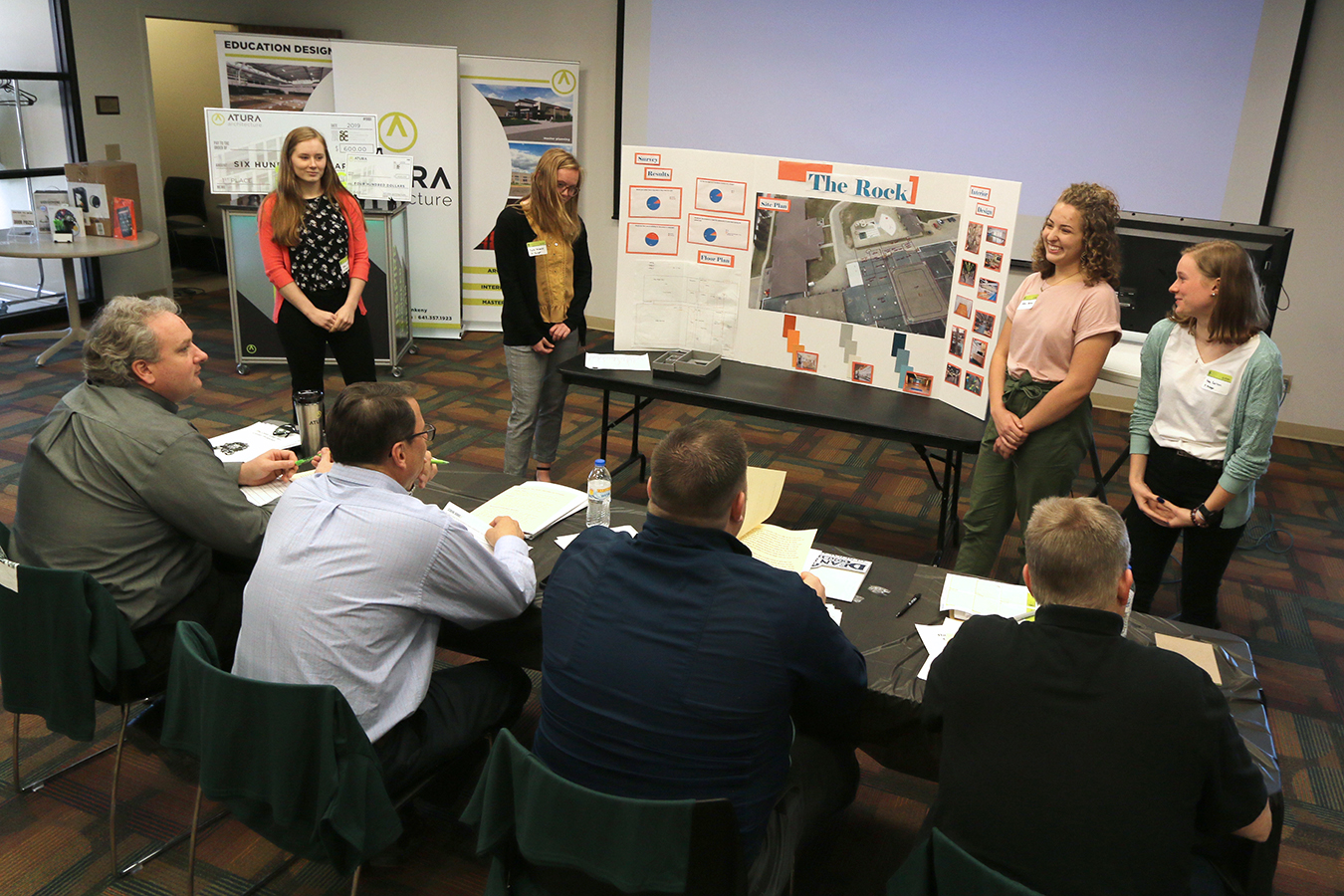The 4th Annual Student Collaborative Design Competition (SCDC) held on Wednesday, April 24 at the Clear Lake Arts Center, saw five teams from three area high schools compete in a battle of ideas. Months of hard work brainstorming, developing plans, and creating models culminated as teams from Clear Lake High School, St. Ansgar High School, and Garner Hayfield Ventura (GHV) High School each presented their plans for a joint-use community/recreation center for their respective communities.
SCDC is an annual architectural design competition put on by ATURA Architecture (Clear Lake) that invites area high school teams to compete in a project-based learning experience. Students were given a specific assignment that required them to assemble their own design team, develop a solution to an identified task, and present those solutions to a panel of judges comprised of industry experts.
For SCDC 2019 students were asked to design a joint-use recreation/wellness center for their school and community. It was up to each individual team to determine what size, location, and amenities their facility would have. After completing research and planning their spaces the teams then portrayed their solutions using visual representations and descriptions by developing a minimum of four materials to illustrate their design solution: a written proposal, site plan, floor plan, and model(s) that they displayed and used in their presentations.
“All the teams did a wonderful job,” said Mark Kroemer, Managing Architect with ATURA and one of the judges of the competition. “We really appreciate all the hard work and thought that each of the students put into their designs!”
At the end of the day, one of the two GHV teams emerged as victors locking up the first-place trophy and receiving a $600 check to support STEM programs at their school. The St. Ansgar team, first-time competitors in this competition, took second place and a $400 reward and one of the two Clear Lake teams finished third receiving $200 for their school.
Of course, the real value the students received from the event was the vital STEM knowledge and real-world skills they gained from the opportunity to learn in a hands-on, project-based educational experience and the valuable insight they gleaned into the importance and processes of architecture.
In anonymous surveys about the event, several students noted that they really enjoyed working collaboratively with their teammates, thinking of ways their building could impact their community, and seeing their ideas come to life. Most students also remarked that they were surprised at how much time it took to design this type of facility. One of the team instructors agreed that SCDC was a success from an educational standpoint, remarking that the event was “a great opportunity for our students.”
Kroemer stated in his remarks during the awards presentation that, “This is an especially valuable experience for any students that are interested in architecture as a possible career path as it mirrors closely the process and types of projects they would work on in architectural programs at universities such as Iowa State.”
“SCDC presents a unique opportunity for students to engage in STEM activities while also learning valuable real-world job skills such as critical problem-solving and public speaking,” says Austin Pehl, Business Development Manager with ATURA and the event’s facilitator, “we are proud to sponsor this event!”
Our firm has recently implemented virtual reality and three-dimensional printing into our rendering and modeling process. The investment has proven to be completely worthwhile, as this new aspect of technology is helping us customize the individual experience for each client. Not only is it time effective for adjusting the project, but it also helps confirm what works well in each architectural situation.
We can transform architectural drawings into a simulating real-world experience. Clients can be fully immersed in the potential environment of their project. This gives a genuine and realistic idea of what the space will feel like, but it is also beneficial for us to receive feedback. Clients can walk around, move items, and experience the entire project before construction starts.
Our 3D printer also provides a unique approach to our process. We are now much more time efficient when it comes to the modeling aspect. Instead of hand building each fully scaled 3D model, the printer saves us time and it is guaranteed to be much more accurate.
The virtual reality and 3D printing aspects both help give clients a more accurate way to visualize the concepts we are creating for their project. VR and 3D printing will continue to help us approach each unique challenge differently and more effectively. Not only does it give us a competitive edge, but our team has fun working with and learning about these new approaches.


Leave a Reply